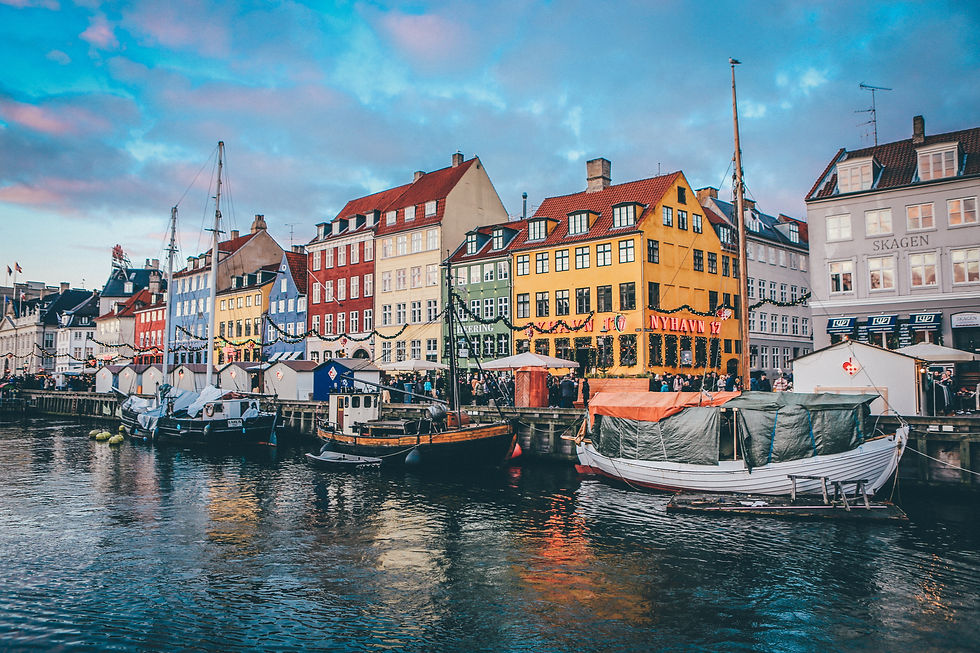
Cities around the world are increasingly considering digital/ICT solutions to enhance their efforts to address the environmental issues they face. Copenhagen, Denmark, provides an interesting example of a city that has investigated the use of digital and ICT infrastructure in specific cases to address some of these challenges.
The Copenhagen Climate Plan and CPH 2025 Climate Plan Roadmap 2021-2025 outlines the overarching approach being taken by the city. This is a comprehensive strategy to make the city carbon-neutral by 2025. The plan was first introduced in 2009 and has since undergone updates. Funding to give effect to the plan has come from both public and private sources, including government grants, investments, and partnerships with research institutions and businesses.
The Copenhagen Climate Plan is supplemented by the Climate Adaptation Plan that aims to address challenges such as rising sea levels and increased precipitation. The plan was introduced in 2011 and includes consideration of solutions in areas such as flood monitoring, early warning systems, urban heat island mapping, and climate modelling. The Plan has been funded by the Danish government, European Union grants, and collaborations with international research institutions.
Initiatives in the Plan/Roadmap enabled by digital/ICT
An example of a key initiative enabled by digital/ICT is the ‘Smart Grid’. This is an initiative by Copenhagen to develop a smart grid system to optimize energy distribution and consumption. The project began in 2012 and has received funding from the Danish Energy Agency and private sector partners, including utility companies and technology providers.
In 2017, Copenhagen received an international award from the C40 Cities Climate Leadership Group for work around energy monitoring and energy management. The city was the first capital in the world to have a centralised, digital energy-monitoring system capable of measuring the energy consumption in many city buildings on an hourly basis.
The Flexible Electricity Consumption initiative that followed is focused on developing remote-control electricity consumption in the city’s buildings on a large scale to allow upscale or downscale electricity consumption. This will mean Copenhagen can support the conversion to an increasingly green electricity market by regulating electricity consumption upwards or downwards.
The Intelligent Traffic Management is another example. This is an initiative to utilize intelligent traffic management systems to optimize transportation and consequently reduce emissions. It uses real-time data collection and analysis to improve traffic flow. The initiative has received ongoing funding from the city's transportation department, public-private partnerships, and research grants. The system has the following components:
Traffic signal control and optimization. The system utilizes advanced traffic signal control systems to optimize signal timings and coordination at intersections. This is achieved by adaptive traffic signal control algorithms that adjust signal timings based on real-time traffic conditions and demands. Traffic signal controllers have sensors and detectors to monitor traffic flow and adjust signal timings accordingly.
Traffic surveillance and monitoring. The intelligent traffic management system utilizes a network of surveillance cameras and sensors to monitor traffic conditions across the city. These cameras obtain real-time video feeds, which are analyzed by computer vision algorithms to detect traffic congestion, incidents, and abnormal conditions. Sensor technology includes inductive loop detectors, or radar, that are deployed to measure traffic volumes, speeds, and occupancy at specific locations.
Real-Time Traffic Data Collection and Analysis. Here the system collects and processes real-time traffic data from various sources, including surveillance cameras, sensors, and vehicle detection systems. The data analytics algorithms then analyze the data to extract insights and identify patterns, such as traffic hotspots and peak traffic hours. This analysis helps traffic management authorities make informed decisions and implement strategies to alleviate congestion and optimize traffic flow.
Variable Message Signs (VMS) and Dynamic Route Guidance. The VMS is deployed in strategic locations along roadways to provide real-time traffic information and guidance to drivers. The VMS display dynamic messages, such as traffic conditions, travel times, and alternate routes, to help drivers make informed decisions. The dynamic route guidance systems use real-time traffic data to suggest optimal routes and detours based on current traffic conditions.
Connected Vehicle Technologies. Copenhagen is currently exploring connected vehicle technologies to enhance traffic management and safety. This technology supports vehicles that are equipped with onboard sensors and communication devices to exchange data with the intelligent traffic management system. Connected vehicles can receive real-time traffic information and alerts, enabling drivers to make informed decisions and avoid congested areas or incidents.
Data Integration and Control Center. The intelligent traffic management system requires integration of data from wide range of sources, such as surveillance cameras, sensors, and traffic detectors, into a centralized control center. The control center provides a command and control hub, where traffic management authorities can monitor real-time traffic conditions and obtain a holistic view of the traffic situation to undertake proactive data driven traffic management strategies.
Summary
The initiatives underway in Copenhagen provide useful cases studies that other cities could consider as part of their suite of climate adaption activities. In terms of digital/ICT support for these initiatives, the city’s focus upon building a 'Smart grid' and the reduction of emissions from transportation are particularly noteworthy with its use of real time data, analytics, and integrated digital control systems.
For more information see:
#HowcanSmartcitieshelptheenvironment? #WhatareSmartcitiesexamples? Whatissmartcitysustainabilityexamples? #GJCSmartcities


Коментарі